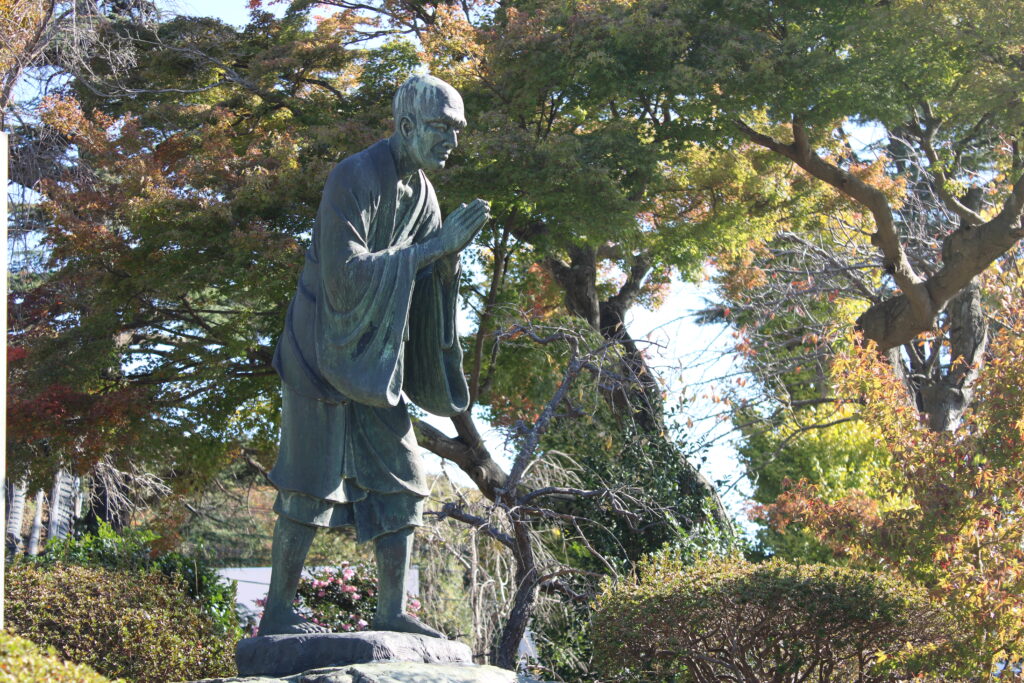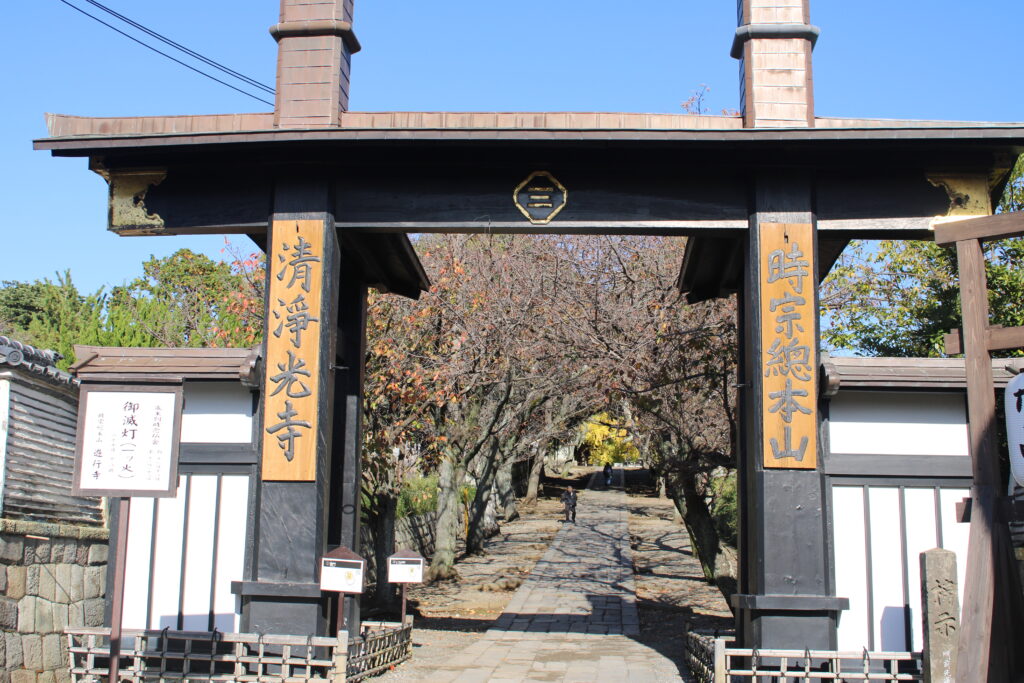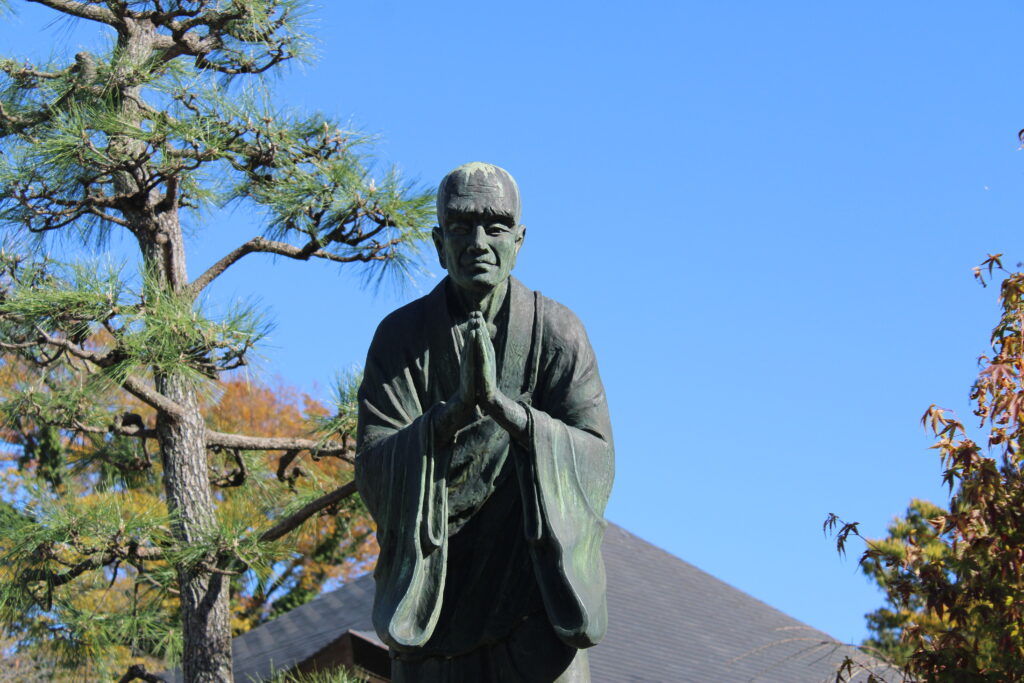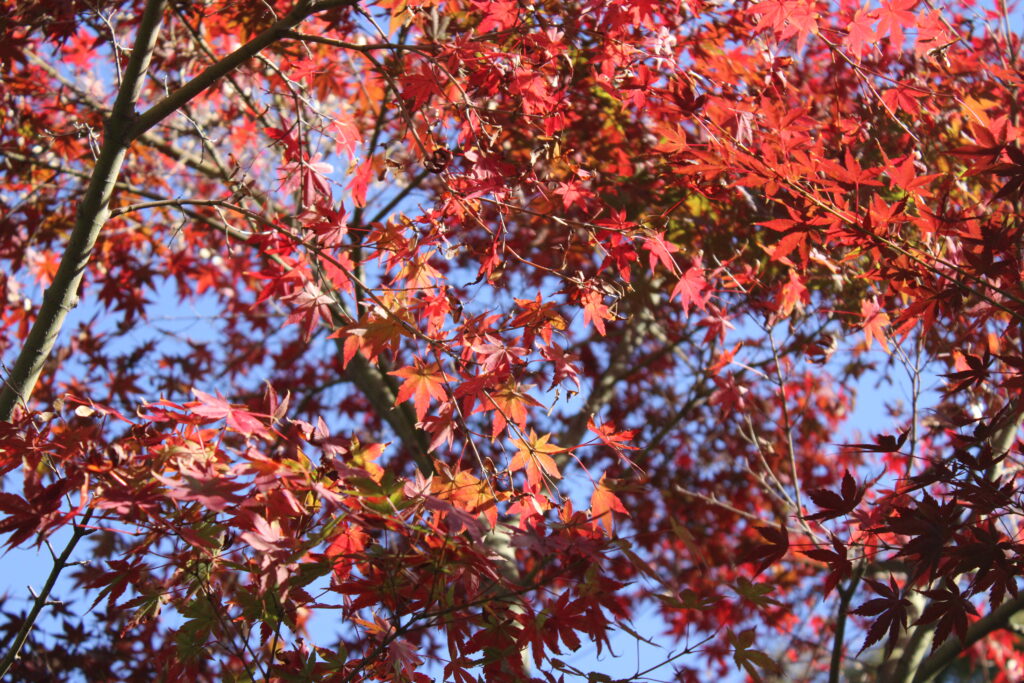Hello everyone! This is Kumakichi!
Usually, I take historical walks around Kamakura, which is located in Kanagawa Prefecture. However, this time I decided to visit Yugyō-ji Temple in Fujisawa City. The reason for this is that, through my explorations of Kamakura, I became interested in the founder of the Jishū school of Buddhism, Ippen. Yūgyō-ji is the head temple of the Jishū!
I visited at the end of November because Yugyō-ji is also famous for its beautiful ginkgo trees. I wanted to see them in that season. I visited on November 27th, and the ginkgo leaves were dyed in a stunning yellow! By December, I think it might be a bit too late to enjoy the ginkgo foliage.
I’d like to share my experience with you, so I hope you’ll enjoy reading through this article until the end!
What is Yugyō-ji Temple?

Yugyō-ji Temple is the head temple of the Jishū school of Buddhism, which was founded by Ippen. The temple was established in 1325.
It is located about a 15-minute walk from Fujisawa Station on the JR Tōkaidō Line. While 15 minutes may seem like a long walk, you will find several ukiyo-e illustrations along the way. As you walk, you’ll feel immersed in history, and before you know it, you’ll have arrived!
The history of Yugyō-ji is deeply intertwined with the history of Fujisawa itself. The area around Fujisawa was an important part of the Tōkaidō route and prospered as the Fujisawa-juku post town. Fujisawa is situated along the road connecting Kamakura and Kyoto, making it a bustling location for both people and goods. Most notably, from the late Kamakura period, Fujisawa developed as the gate town for the head temple of the Jishū school, Yugyō-ji.
From the mid-Edo period onwards, it became a key stop for travelers heading to Mount Ōyama or Enoshima, as it marked the junction for the “Ōyama Road” and “Enoshima Road.” This brought a great deal of activity and prosperity to the area.
Who was Ippen?

Ippen was the founder of the Jishū school of Buddhism. He was born into the Kōno family, a samurai clan from Iyo (modern-day Ehime Prefecture).
Ippen studied Pure Land Buddhism for 12 years under the guidance of a monk named Katai at the Kiyomizu-dera Temple in Hizen (modern-day Saga Prefecture). After some twists and turns in his journey, he visited Shitennō-ji Temple in Osaka, where he changed his name to Ippen. It was there that he began distributing nembutsu slips (also known as fusan), which were meant to help people attain salvation through the recitation of the Nembutsu (the name of Amida Buddha).
While distributing these slips, it is said that Ippen received a divine message during his retreat at Kumano Hongū Shrine, which stated:
“It is not because of your encouragement that people can attain rebirth. It is through the power of Amida Buddha that they can. Therefore, regardless of a person’s faith or purity, you should distribute the slips.”
This teaching emphasizes that the act of distributing the slips was not about whether someone believed, but about the universal compassion of Amida Buddha, and it is a key point in understanding Ippen’s teachings.
Additionally, Ippen began the practice of dancing nembutsu and continued his wandering pilgrimage for about 16 years. He passed away at the age of 51.
The Grounds of the Temple


Now, let’s start with the entrance to Yugyō-ji Temple, which looks like the photo above. If you walk straight through the gate, you’ll come to the main hall. As you climb a slight hill (known as Iroha-zaka), you’ll soon see a large ginkgo tree, as shown in the photo below.

As I reached the top of the hill, I could see the main hall behind the ginkgo tree!

And what a massive ginkgo tree it is! It has become a symbol of Yugyō-ji Temple. In fact, it is said to be the thickest tree in Fujisawa City. The tree was once about 31 meters tall, but in the 1982 typhoon, the trunk broke about 6 meters above the ground. Just imagine how huge it must have been at 31 meters! As for its age, it is believed to be over 250 years old, with estimates placing it at around 650 to 700 years.

As I wandered around the temple grounds, I came across a statue of Ippen and a purification fountain (chōzuya). It’s a good idea to greet Ippen before continuing your visit. One of the distinctive features of Ippen is that he is depicted as thin and slightly hunched forward. I definitely felt that this statue captured those features accurately.


Also, the Sakai Tada-shige Gyakushū Rokujizō (Sakai Tada-shige’s Six Jizo Statues) and the Dourō (Big Bell) are quite charming and add to the atmosphere of the temple.


There is also the tomb of Oguri Hangan. The name sounded familiar, so I quickly looked it up online, and it seems that he is a famous figure in jōruri (a form of Japanese puppet theater) and other traditional arts. There are legends about him, but it’s unclear whether he was a real person or not… I’d like to do more research on him next time!
Also, as I mentioned earlier, the ginkgo tree is famous, but you can also enjoy a bit of the beauty of the maple leaves here as well!


Conclusion
What do you think?
As expected from the head temple of the Jishū school, there were so many interesting sights to see! I would be delighted if you get the chance to visit. When you do, learning a little about Ippen’s life and teachings will help you feel a deeper connection to the place.
Additionally, the area around Yugyō-ji in Fujisawa is filled with ukiyo-e illustrations and offers a wonderful opportunity to experience the history of the Fujisawa-juku post town. It was a fantastic place for history enthusiasts to visit!




コメント